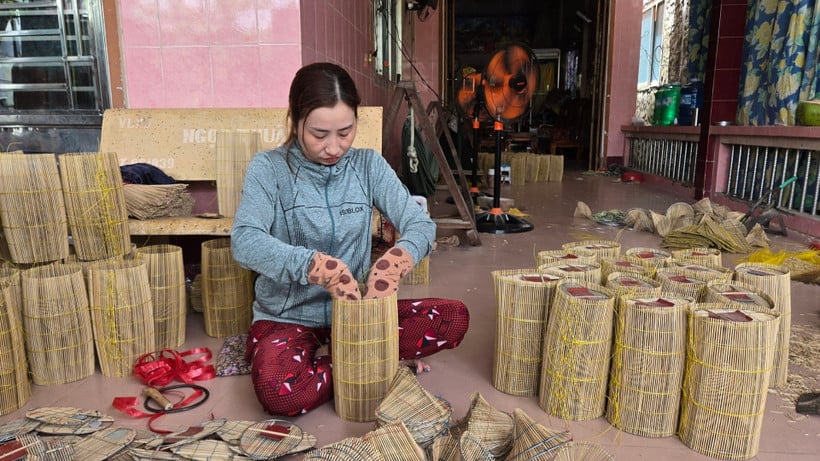
It is not easy to find the exact address of Thoi Long craft village. From the main road, you have to follow many small roads, crisscrossing along the canals and streams. Called a craft village, but what remains here are only a few dozen households still weaving baskets, mainly the elderly.
Traps are a long-standing traditional fishing tool of the Mekong Delta residents, mainly made of bamboo. This tool is used to place under ditches, canals, fields, etc., taking advantage of the water flow to lure fish into it so they cannot escape. Later, when modern tools were invented, manual weaving of traps was laborious and the selling price was low, making young people no longer interested in continuing the profession.
In Thoi Long, old workers toiled beside piles of yellowed bamboo, using their calloused hands to quickly split, whittle, and bend each slat.
Mr. Le Van Bon (Sau Bon) is 88 years old this year and has been working in the profession for more than 60 years. Mr. Bon shared that the traps show the intelligence and ingenuity of the people in the river region of the West.
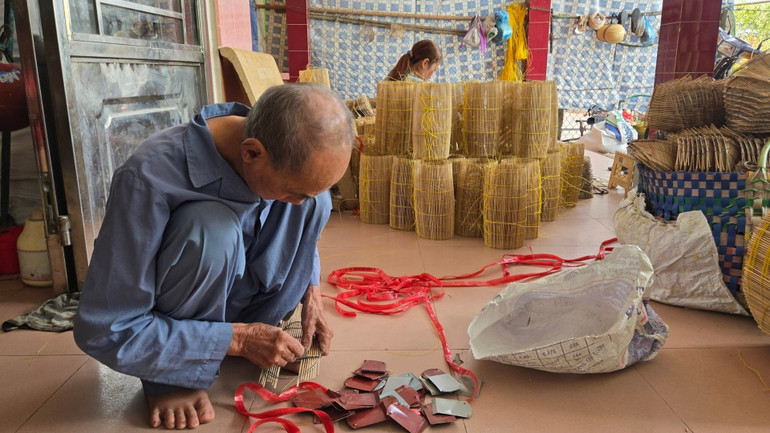
Because it requires skill, every step must be carefully prepared and requires a high level of proficiency. A worker, if learning to knit only needs about a week, but to master all the steps, it takes a long time to accumulate experience.
Bamboo used here is usually purchased from neighboring areas and brought back to be stacked in front of the yard. The bamboo trees are carefully selected, must have straight trunks, even tubes, no cracks, no worms and have a yellowish color. If the tree is too young or too old, it will break easily or become brittle and difficult to split.
People here often choose the dry, sunny season to cut bamboo. After that, the bamboo will be soaked in river water for a few weeks to clean the resin and then dried in the sun.
The yard of Mr. Ta Van Buong (77 years old) is full of finished bamboo baskets. That is the batch of goods his family is preparing to deliver to customers. His tools are nothing special, just a small, very sharp knife, a bundle of bamboo strips and steel wire rolls. He leisurely peels bamboo, weaves baskets and chats happily with people around him.
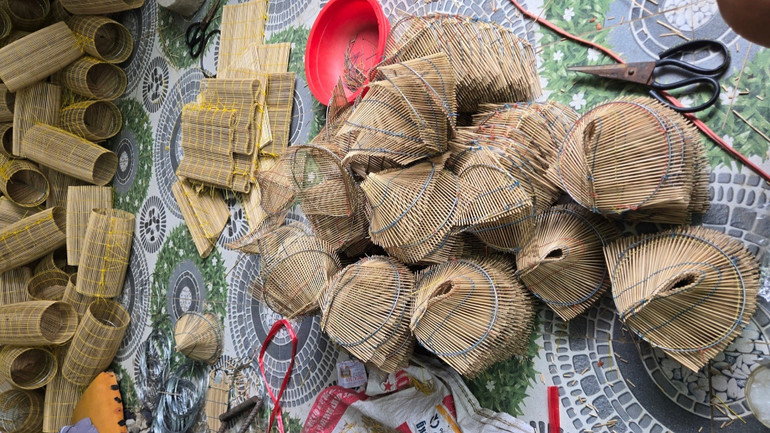
Mr. Buong said that for him and other long-time workers, this profession is like the rhythm of life, the breath of life. Whenever the family has an event or is sick and cannot work, they feel bored. During the golden age, when the flood season is near, the whole village is like a festival, every house is bustling, crowded, each person has a hand and foot to make the delivery on time. Traders from everywhere come here, bustling on every street.
According to Mr. Buong, the village was formed more than half a century ago. At that time, the Thoi Long area had a dense network of fields and canals, and people lived mainly by growing rice and fishing. Here, people made their own bamboo traps from the bamboo available around their houses.
Initially, it was just a side job to serve family needs, but gradually, people turned the weaving of bamboo traps into a traditional profession. It did not take long for Thoi Long bamboo traps to be sold by traders throughout Can Tho and the Mekong Delta.
Ms. Le Thi Bay (75 years old) shared: "When we were doing well, my whole family could not keep up with the work because traders placed orders regularly. Thanks to the traps, I was able to raise 5 children and send them to school. Through many historical events, the craft village still persisted and was passed down through many generations. Up to now, although the number of households still following the profession has gradually decreased, people tend to use modern fishing tools, but if we work hard, we can still ensure our lives."
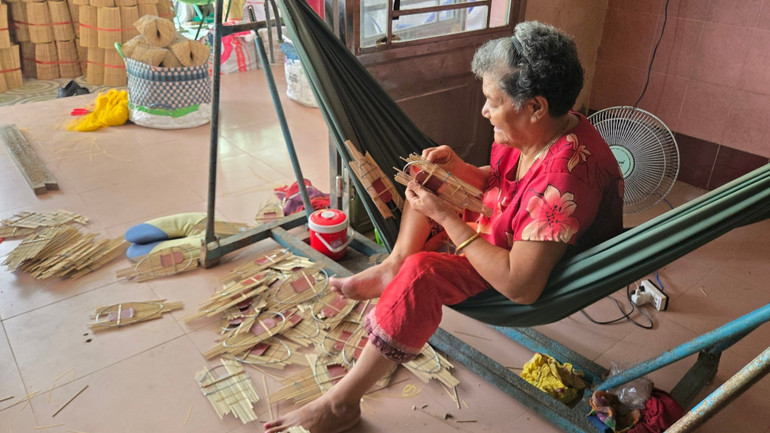
Although Mr. Bay and many other weavers in Phuoc Long still believe in the long-term survival of the traditional craft, in reality, preserving and conserving the craft village is still a difficult problem.
According to the reporter, in Phuoc Long craft village, there are only about 10 households still keeping the profession, mainly concentrated in clusters. Besides, because the young generation is not interested in the profession, most of the families here have to hire outside workers.
Mr. Le Van Bon shared that he is now old and does not know how much longer he can hold a bamboo knife. He has passed on the profession to his children, but only a few of his grandchildren follow the profession. "It would be a waste to lose the traditional profession. It is not only a way to make a living, but also the identity of our hometown. I just hope that the local government will find a way and have policies to help the young generation stick with their ancestors' profession," Mr. Bon shared.
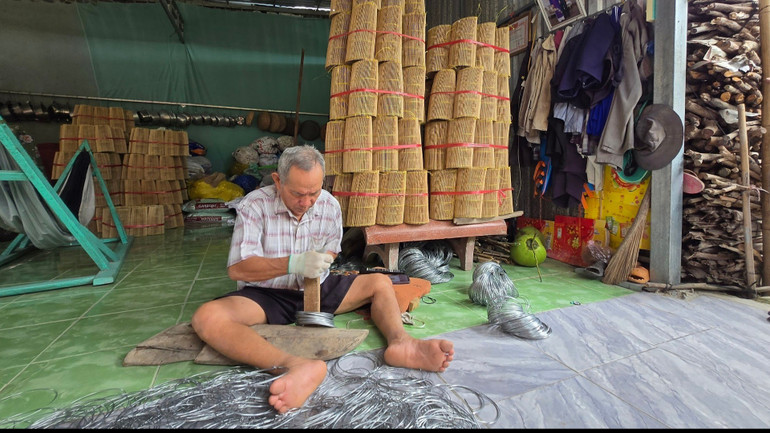
According to many people in Thoi Long, to preserve the traditional profession, proper support is needed, especially a stable output. Besides, if the products here are recognized as part of the typical cultural values of the West, it will attract tourists to the locality, creating revenue from tourism .
"I visited a few craft villages and saw that they had a grand welcome gate and a product introduction area for visitors. If the Thoi Long weaving craft had such a space, it would certainly attract tourists because the products also demonstrate the ingenuity of the people. Not to mention, the trap is also closely associated with river life," said a resident of Thoi Long craft village.
According to experts, in order to preserve and develop Thoi Long weaving village, the local government needs to have a long-term direction. The weaving craft has historical value and is a symbol of the river life of the Mekong Delta. Therefore, if exploited in the right direction, this can completely become a unique experiential tourism highlight of Can Tho.
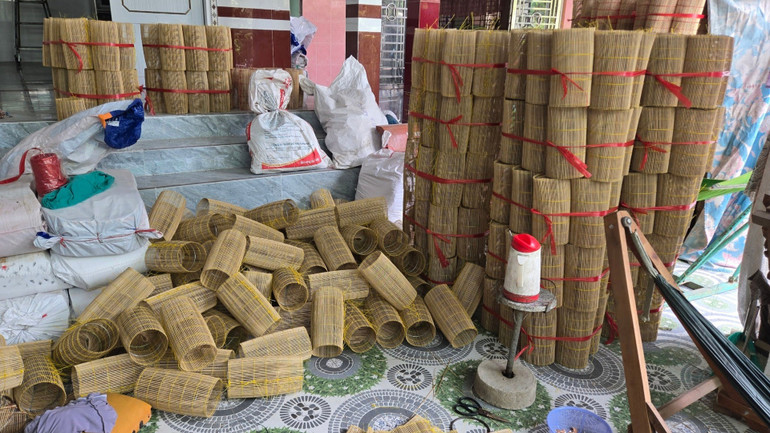
"The locality needs to invest in building a space to display and demonstrate handicrafts, combined with ecological-cultural tours. Only then can we attract tourists to learn about the process and experience weaving themselves. In addition, we need policies to encourage young people to participate in vocational training, support loans, and create stable output," said Southern culturalist Nham Hung.
Source: https://nhandan.vn/gin-giu-nghe-dan-lop-thoi-long-can-tho-post917116.html





![[Photo] Prime Minister Pham Minh Chinh chairs meeting on railway projects](https://vphoto.vietnam.vn/thumb/1200x675/vietnam/resource/IMAGE/2025/10/23/1761206277171_dsc-9703-jpg.webp)


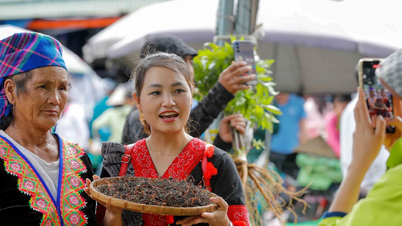

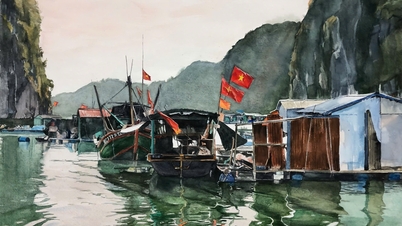















![[Photo] Prime Minister Pham Minh Chinh chairs meeting on railway projects](https://vphoto.vietnam.vn/thumb/402x226/vietnam/resource/IMAGE/2025/10/23/1761206277171_dsc-9703-jpg.webp)



























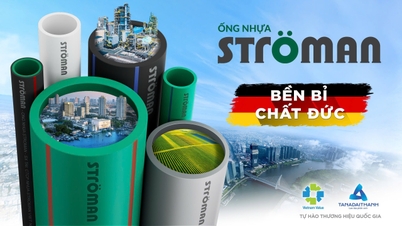













































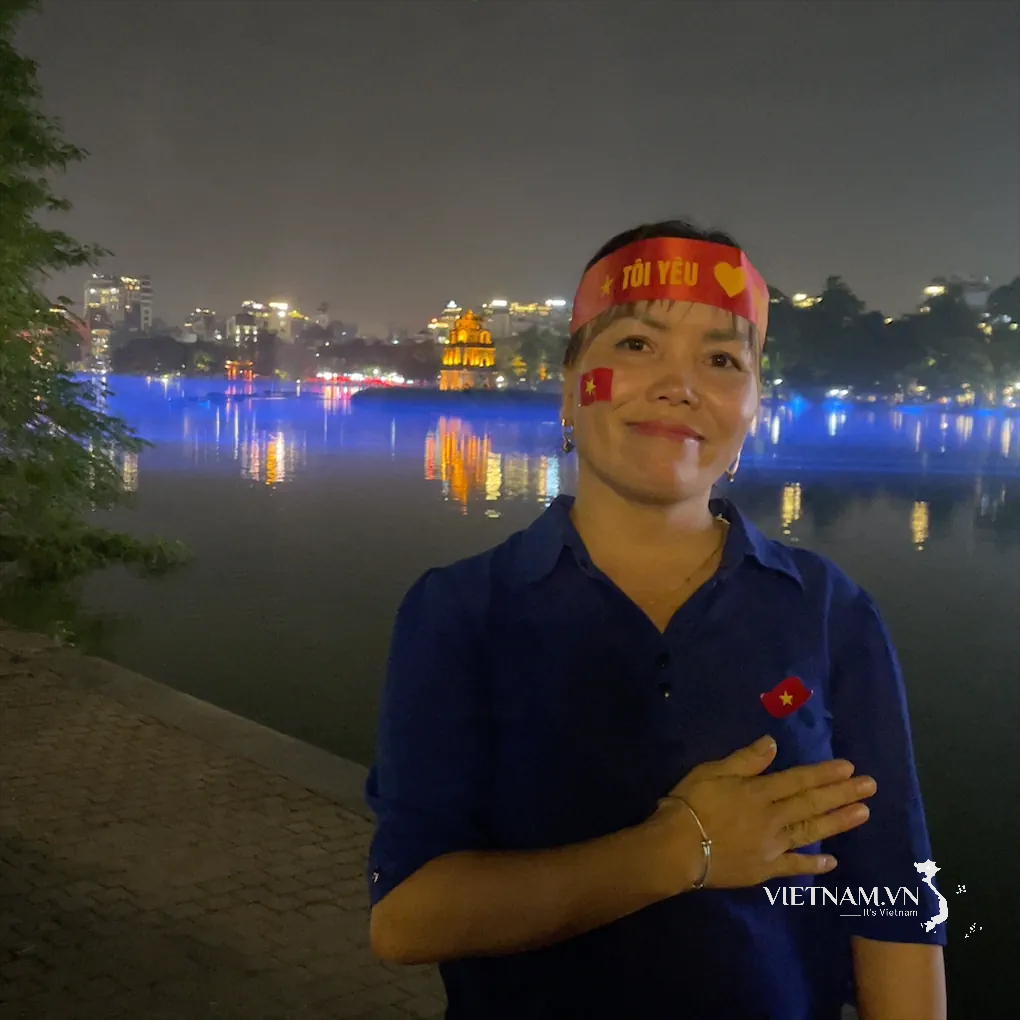

Comment (0)